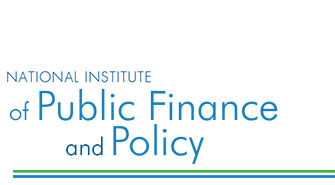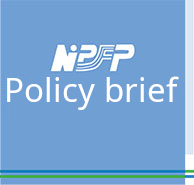Designing Policies in the Presence of Hawala Markets
R. KAVITA RAO, Director, National Institute of Public Finance and Policy, New Delhi, India. email:director@nipfp.org.in
SURANJALI TANDON, Consultant, National Institute of Public Finance and Policy, New Delhi, India.. email:suranjali.tandon@nipfp.org.in
|
Relevance of the Hawala market in India
The Hawala market is an alternative payment channel used to transfer money across countries. This channel is preferred for its relatively low costs, fast settlement and lack of documentation. The existence of this market in India and in other countries is well documented. This mode of payment may be used for transfer of both for legally earned incomes (as in the case of remittances from wages earned abroad) and illegally earned incomes. For an example of the latter, consider the following: during the surge in current account deficit and the consequent exchange rate depreciation in India in 2013, the Union Government and the Central Bank responded by raising the customs tariff on gold and performing open market operations respectively. The effect of the rise on customs tariff was a decline in official gold imports with a simultaneous increase in smuggled gold. During the first quarter of 2013-14, the value of gold seized was worth INR 270 million which was ten times than that reported in 2012. The payment for these forms of gold imports is made through the foreign exchange flows in the informal channels and this is reflected in a surge in hawala margins during the same period. To corroborate this, newspaper reports suggested that margins on hawala transactions have gone up from 0.5 per US$ to 3.5 per US$.
We in Rao and Tandon (2015) on which this One pager is based, ask whether the efficacy of policy interventions is altered in the presence of hawala market and whether alternative instruments are available to achieve the same exchange rate target. 1. Hawala market and its interaction with market for foreign exchange
In this paper a theoretical model has been used to illustrate the interaction of the formal market with the hawala market. The hawala market has been structured as a competitive market with inflows and outflows. These inflows have been taken as demand for rupees and outflows as supply of rupees thereby making up the demand for and supply of hawala transactions. The hawaladar or the agent facilitating these transactions incentivises these flows by setting a margin on one leg of the transaction (inflow) based on a competitive margin on the other (outflow). For his services he earns an income on total volume of transactions. Other than the margins offered, flows through this channel also respond to policy changes. An increase in direct tax rate is expected to reduce flows through the official channel and thereby lead to higher inflows through hawala. An improvement in tax administration is likely to reduce inflows and increase outflows through the hawala channel owing to higher threat of detection. An increase in customs tariff lowers reported imports and the payment for the unreported imports is made through hawala. A foreign exchange intervention to stall depreciation makes individuals hold off their decisions to bring in money through hawala. Using these relationships and assuming that market clears, the demand and supply equations for hawala are put together, to get market-clearing values for
|
hawala margins. The official market for exchange rate is taken as a sum of components of demand for and supply of foreign exchange, which are imports, foreign investment outflows and exports, foreign investment inflows respectively. In addition to standard determinants of each of these components (exchange rate and GDP), the hawala margin on inflows is introduced as a determinant of foreign exchange inflows indicating that higher hawala margins on inflows redirects some of the formal inflows through hawala. Solving for the hawala margin, foreign exchange rate and GDP we get the market clearing conditons.
2. Policy implications of the model
The equations allow us to see the direction of impact of hawala market on exchange rate and GDP in case of four possible policy interventions - change in customs tariff, tax administration, direct tax rate and open market operations. The paper concludes on the basis of this model that the presence of hawala market tones down the impact of policy changes on exchange rate. Therefore, if the central bank targeted a certain exchange rate, a higher value of intervention would be required in the presence of hawala which in turn would also have the perverse impact of increasing the scale of transactions in the hawala market. For this purpose, the paper illustrates that an economy confronting paucity of foreign exchange reserves can target exchange rate through the use of alternative policy instruments. For example, an increase in the customs tariff or a reduction in direct tax rates could be a better option. Further, they both would be preferable if the intended result is also an increase in GDP. Alternatively, if the purpose of the government is to raise the level of income it can do so with a reduction in direct tax rate along with an improvement in tax administration. While a combination of the two can leave exchange rate unchanged, the impact on GDP will be positive. The simultaneous implementation of these two measures creates incentives in the system to declare higher incomes. However, achieving higher income in the economy through the use of the aforementioned policy combination will bring in more revenues for only a certain value of tax rate beyond which this may not be feasible.
References
1. Mukherji, Biman and Arpan Mukherjee, 2013. “Gold Smuggling Takes off in India”, 25th July. http://online.wsj.com/news/articles/SB10001…
2. Rao, R. Kavita, Suranjali Tandon, 2015. “Designing Policies in the Presence of Hawala Markets”, Working Paper no. 142, NIPFP, New Delhi (January).
3. Roy, Anup and Khushboo Narayan, 2014. “High hawala premiums point to increase in gold smuggling”. Mint. 9th April.
|




